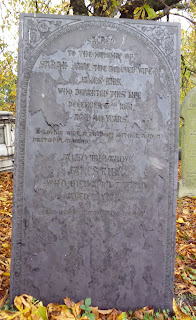Nicola Barker's Clear: A Transparent Novel is a reference to endurance artist David Blaine's Above the Below performance, in which in 2003 he lived on only water for forty-four days in a transparent plastic box suspended thirty feet over the left bank of the River Thames between City Hall and Tower Bridge.
After her novel Behindlings (2002) Barker was writing Darkmans (2007) when she became distracted by a very negative comment Catherine Bennett wrote in the Guardian about Blaine, so Barker decided to write this book, which she did in just three months. She couldn't understand all the hatred Blaine had generated. I'm a little unsure about Above the Below as a comment on consumerism/capitalism, but I can understand Barker's concern, and I very much appeciate her interest in marginal characters.
Clear is narrated by Adair Graham MacKenny, a 28-year-old who works in an office near the Blaine box, and who sees the attraction as an opportunity to pick up girls. And then he meets Aphra, a fascinating young woman with an interest in Tupperware and who has an olfactory sense so acute that she can tell a person's diet simply by smelling their shoes.
Blaine was inspired to perform his dangerous act by Kafka's 'A Hunger Artist', and the fact that Adair checks this short story out to have an understanding of Blaine's actions certainly figures. What doesn't figure as much, though, is the bookending of Jack Schaefer's western novel Shane, as I can't see too many similarities between the book's eponymous outsider hero and David Blaine.
Nope. But perhaps I can see why Boyd Tonkin called this 'the hippest literary novel of the year' (my italics). Like, it's literally totally crammed with hip cultural references and white space.
This is just to indicate a pause for breath. Yup.
?!
Blah blah blah blah.
After her novel Behindlings (2002) Barker was writing Darkmans (2007) when she became distracted by a very negative comment Catherine Bennett wrote in the Guardian about Blaine, so Barker decided to write this book, which she did in just three months. She couldn't understand all the hatred Blaine had generated. I'm a little unsure about Above the Below as a comment on consumerism/capitalism, but I can understand Barker's concern, and I very much appeciate her interest in marginal characters.
Clear is narrated by Adair Graham MacKenny, a 28-year-old who works in an office near the Blaine box, and who sees the attraction as an opportunity to pick up girls. And then he meets Aphra, a fascinating young woman with an interest in Tupperware and who has an olfactory sense so acute that she can tell a person's diet simply by smelling their shoes.
Blaine was inspired to perform his dangerous act by Kafka's 'A Hunger Artist', and the fact that Adair checks this short story out to have an understanding of Blaine's actions certainly figures. What doesn't figure as much, though, is the bookending of Jack Schaefer's western novel Shane, as I can't see too many similarities between the book's eponymous outsider hero and David Blaine.
Nope. But perhaps I can see why Boyd Tonkin called this 'the hippest literary novel of the year' (my italics). Like, it's literally totally crammed with hip cultural references and white space.
This is just to indicate a pause for breath. Yup.
?!
Blah blah blah blah.









